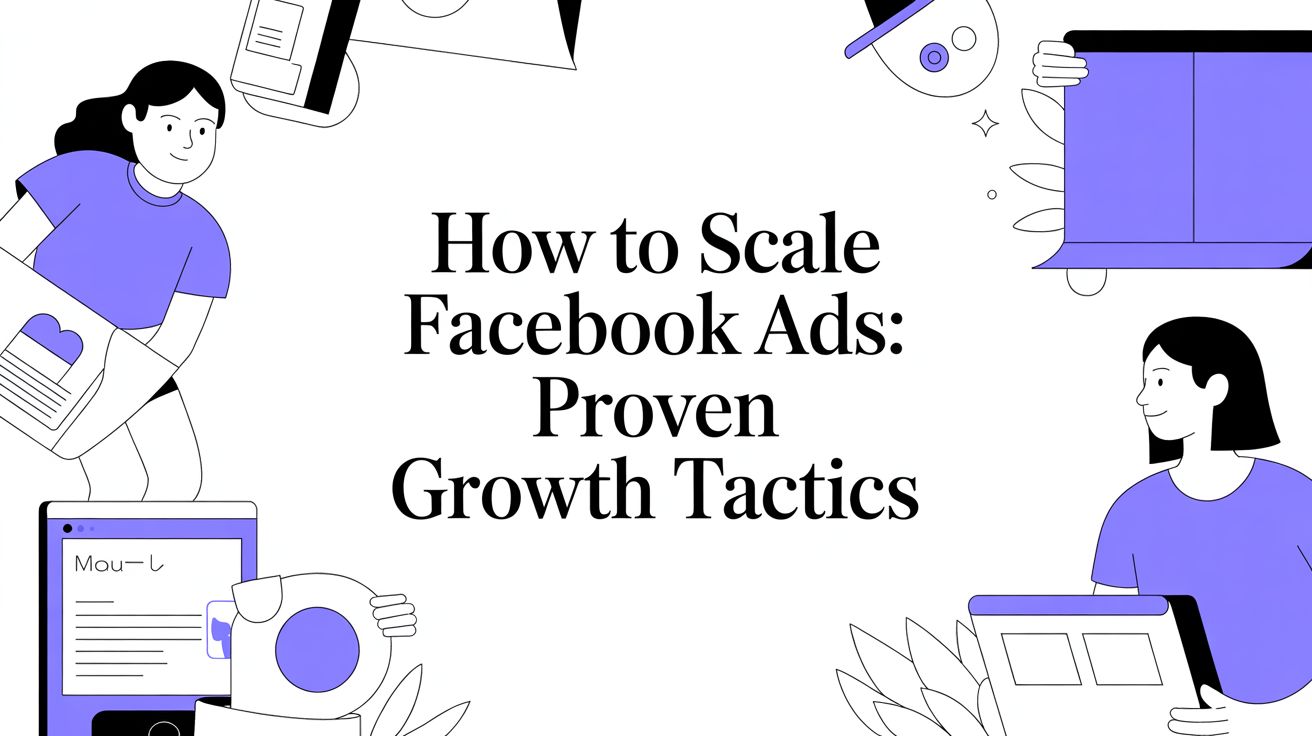Why Smart Marketers Are Switching to AI Video Ads
Traditional video production can feel like a dinosaur. Five-figure budgets? Endless revisions? Weeks or even months waiting for the final cut? And then, after all that, no guarantee it’ll even land with your audience. Sound familiar? Now imagine creating a whole video ad campaign in just a few hours. That’s the potential of AI. I’ve been chatting with agency owners who've jumped on the AI video bandwagon, and it's not just about saving money.
This shift is about opening up video creation to everyone. Small businesses that couldn’t even dream of professional-quality video before can now compete with the big players. Think of a local bakery producing ads as slick as a national chain. That's the reality AI is making possible. One agency owner told me they used AI to create personalized video ads for each of their client's target demographics—something that would have been way too expensive with traditional methods. That level of detail is a real game-changer.
AI also unlocks a whole new level of creative experimentation. Imagine wanting to test five different versions of a video ad, each with different actors, backgrounds, and calls to action. Traditionally, that’s a budgetary nightmare. With AI, it's just another task you can tick off your to-do list. This speed lets marketers test and iterate quickly, leading to much more effective campaigns. You can figure out what really connects with your audience much faster and adjust your strategy accordingly. Plus, because AI video production is so cost-effective, you can experiment more freely without worrying about breaking the bank.
The market itself is showing just how big this shift is. The AI video generator market is booming, fueled by advancements in artificial intelligence and the ever-growing demand for video content. By 2024, the market was valued at USD 534.4 million, and it’s projected to hit USD 2,562.9 million by 2032, growing at a CAGR of 19.5%. This explosive growth shows the huge potential of this technology. You can find more insights into the booming AI video generator market here. Now is the time to get ahead of the curve and establish your competitive edge with AI video ads. Don't get left behind while others are using this technology to reach new heights.
Finding Your Perfect AI Video Creation Platform
Let's be honest, the hype around AI video platforms is often…a lot. After spending actual ad dollars on testing various tools, I've seen firsthand the huge difference between platforms that deliver and those that just sound good. We're going to focus on the features that actually move the needle for your ad campaigns, not just the bells and whistles. Think accurate script-to-video, high-quality exports that don't scream "cheap AI," and other practical stuff that gets you results.
Here’s an infographic comparing three popular platforms based on monthly cost, number of templates, and an overall AI feature score. 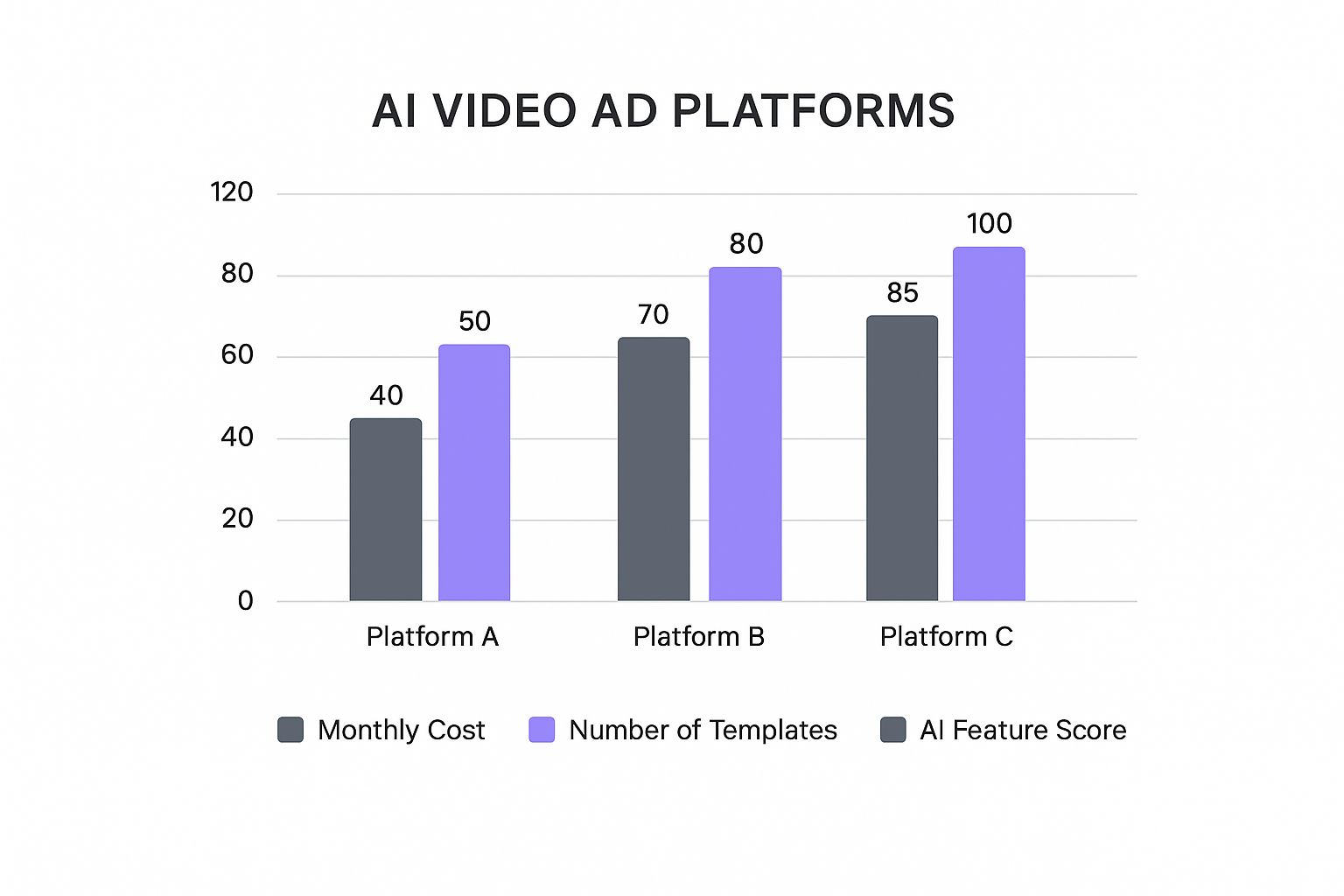 You can see that Platform B hits a sweet spot with affordability, template variety, and solid AI capabilities—a good starting point for most. Platform C, while pricier, packs the most powerful AI features if you're ready to make that investment.
You can see that Platform B hits a sweet spot with affordability, template variety, and solid AI capabilities—a good starting point for most. Platform C, while pricier, packs the most powerful AI features if you're ready to make that investment.
Beyond the Marketing Hype: Real-World Performance
Forget the glossy demos. I’ll give you the straight talk about platform limitations, hidden costs that can sneak up on you, and integration issues that could wreck your campaigns. You'll also learn which tools are best for different business models. What works for an e-commerce store might not be the best for a B2B SaaS company, and we’ll cover why.
This screenshot is from Synthesia, a platform known for its AI avatars.  Their simple interface is great for quick video creation, but that simplicity could limit your customization options for more involved projects. This is something I ran into on a recent campaign and had to switch platforms mid-way through.
Their simple interface is great for quick video creation, but that simplicity could limit your customization options for more involved projects. This is something I ran into on a recent campaign and had to switch platforms mid-way through.
Hidden Gems and Budget-Friendly Options
We'll also dig into some lesser-known platforms—the kind the big players don't want you to know about. These can be surprisingly powerful and budget-friendly alternatives. My goal is to give you all the info you need to choose the right AI video platform, so you’re getting the most value for your money. This means understanding the strengths and weaknesses of each and how they align with your specific advertising goals.
To help you with your research, I've put together a comparison table of some of the top AI video platforms:
AI Video Platform Comparison: Comparison of top AI video creation platforms showing features, pricing, and best use cases
| Platform | Key Features | Pricing | Best For | Limitations |
|---|---|---|---|---|
| Synthesia | AI avatars, text-to-speech, multiple languages | Starts at $30/month | Quick video creation, simple explainer videos | Limited customization, can be pricey for high usage |
| Pictory AI | Automated video editing, repurposing content | Varies based on usage | Social media content, short-form video ads | Best for existing video footage, not ideal for fully AI-generated videos |
| Steve.AI | AI-powered animation, wide range of templates | Starts at $20/month | Animated explainer videos, product demos | Steeper learning curve, template-heavy approach |
| In-house Solutions (e.g., RunwayML) | Highly customizable, full control over the process | Varies depending on infrastructure and expertise | Businesses with dedicated AI/ML resources | Requires significant technical expertise, high upfront investment |
This table provides a quick overview of some key players in the AI video space. As you can see, each platform caters to different needs and budgets. Consider your specific requirements, technical capabilities, and budget when making your choice. There’s no one-size-fits-all solution, but with a little research, you can find the perfect AI video platform for your business.
Writing Video Scripts That Convert With AI
Most people write AI video scripts like they're writing for a human audience and just hoping the AI can make it work. That's a recipe for mediocre results. The real magic happens when you write scripts that leverage the strengths of AI and resonate with viewers enough to drive action. I've personally witnessed campaigns where this shift in thinking led to over 300% improvements in conversion rates, and I'm excited to share what I've learned.
The Hook: Grabbing Attention in the First Three Seconds
Let's dive into the anatomy of high-performing AI video ad scripts, specifically the hook formulas that instantly grab attention. Those first three seconds are absolutely crucial. It's your one and only chance to make a strong first impression and prevent viewers from scrolling past. Think of it like a fishing lure – you need something shiny and irresistible to get a bite! One incredibly effective hook I've used is leading with a bold statement that speaks directly to a viewer's pain point, immediately followed by the solution. This establishes relevance and sets the stage for your message.
Storytelling for AI Avatars and Synthetic Voices
Traditional copywriting wisdom often falls flat in the world of AI. You're not writing for a human actor who can convey subtle nuances and emotions. Instead, you're writing for an AI avatar paired with a synthetic voice. This requires a different storytelling approach. For example, shorter sentences, clearly pronounceable words, and a slightly more emphatic delivery style tend to perform exceptionally well. Want to learn more about creating compelling video ads? Check out our guide on how to make video ads.
Psychological Triggers and Calls to Action
Certain psychological triggers work wonders with AI-delivered content. Scarcity, social proof, and authority, in particular, can be incredibly persuasive when integrated into your script. Imagine a limited-time offer presented by an AI avatar dressed as a doctor (for health-related products, obviously). This cleverly combines scarcity and authority for a powerful one-two punch. Similarly, incorporating social proof – something like "9 out of 10 customers saw results" – can significantly boost credibility.
Timing and Subtle Tweaks That Double Conversions
The timing of your call to action (CTA) within an AI video ad is critical. Too early, and you'll lose viewers who aren't yet invested. Too late, and the opportunity slips away. Through lots of experimentation, I've discovered that placing the main CTA around the 75% mark often yields the best results. Also, small script tweaks, like changing "Click here" to the more inviting "Learn more," or adding a sense of urgency with "Don't miss out," can sometimes double your conversion rates. It's all about making the CTA feel natural and compelling within the context of the AI-generated video.
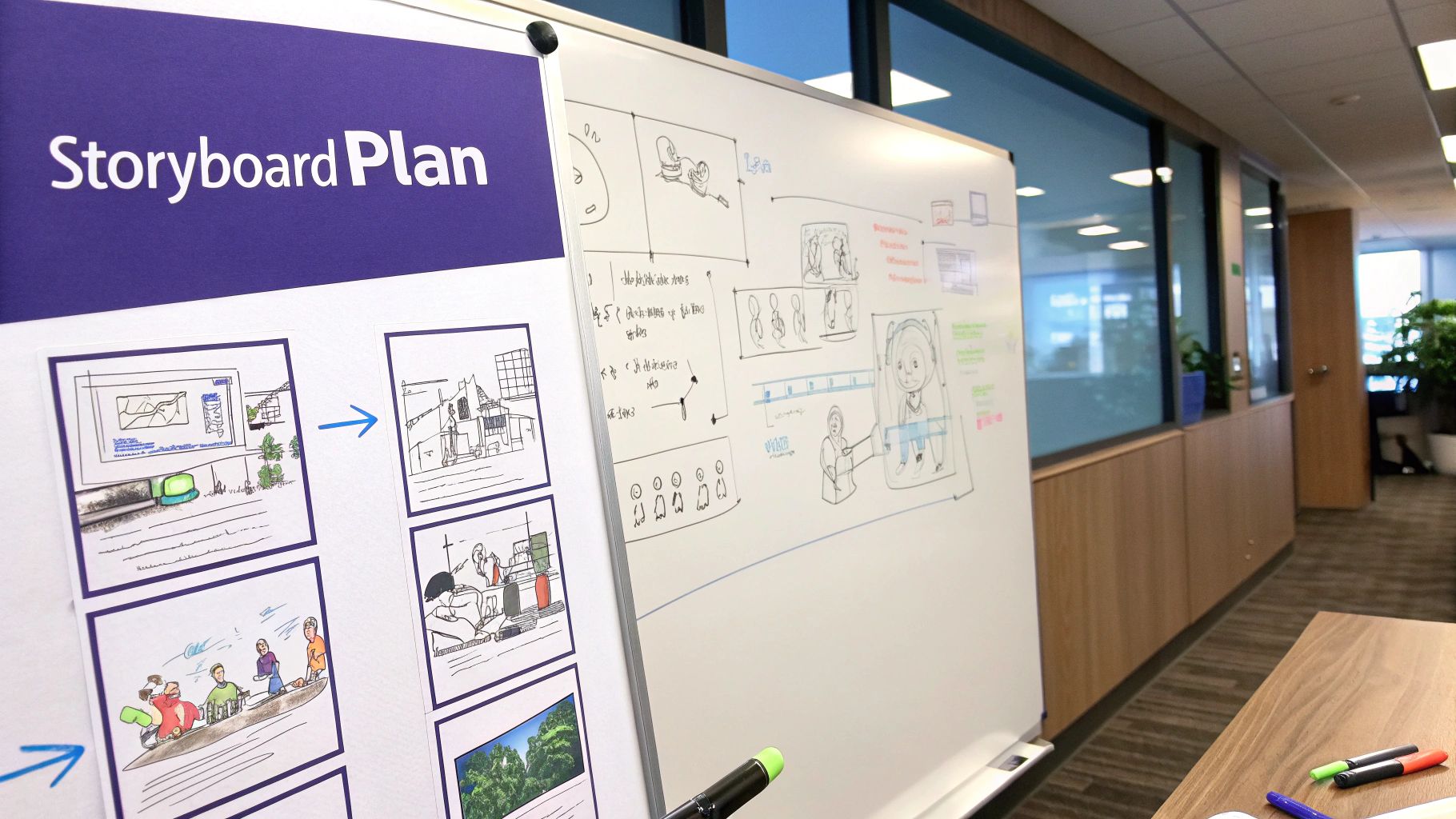
The shift towards digital video advertising is gaining serious momentum. Digital video ad spending is projected to hit $72.4 billion in 2025, a 14% jump from 2024. By 2025, digital video is expected to account for almost 60% of all U.S. TV/video ad spend. Discover more insights about digital video ad spending. Mastering these scriptwriting techniques will give your AI video ads a real competitive edge in this booming market.
Making AI Videos Look Professional, Not Robotic
The biggest hurdle with AI video ads isn't making them. It’s making them look polished and intentional, not like some robot spat them out. After countless campaigns, I've picked up a few tricks about which visual strategies really elevate AI-generated content. Let's dive into how to choose backgrounds, graphics, and visuals that complement your AI content, instead of fighting against it.
Color Psychology and Font Choices
Color psychology plays a huge role in how your ads are perceived. Certain palettes just work exceptionally well with AI avatars. I've found softer, natural tones create a much more believable and engaging feel. Think earthy greens, calming blues, or warm neutrals. They tend to complement AI-generated skin tones and keep things from looking too artificial.
Font choices matter, too. Clean, readable fonts look professional without screaming "template." Steer clear of anything too stylized or decorative. Those can clash with the AI aesthetic and distract from your message.
This screenshot shows Canva’s interface, which offers a bunch of design templates and tools. 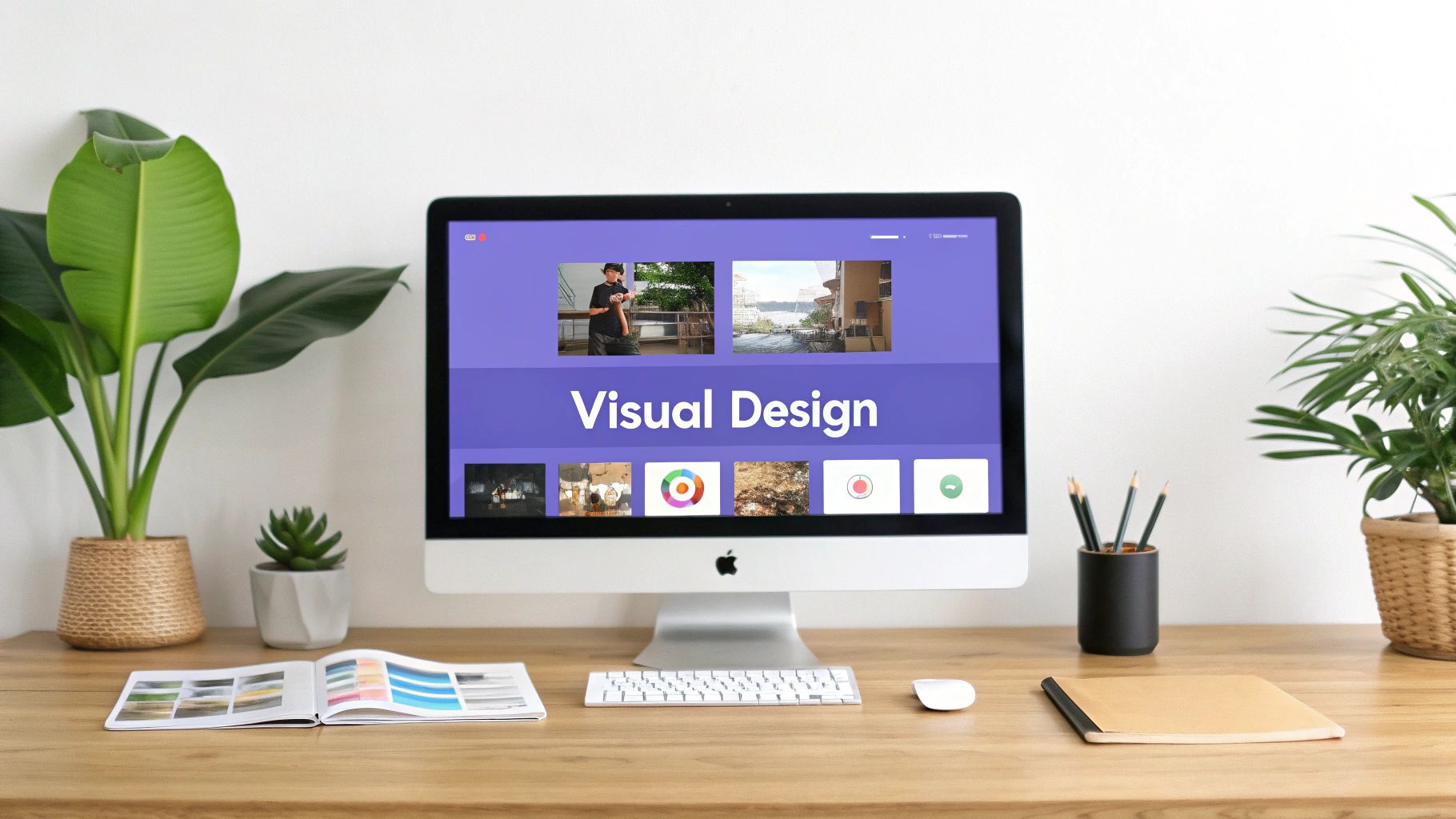 Canva is super user-friendly, but it’s essential to customize those templates. You don't want a generic look, especially when you're trying to create cutting-edge AI video ads. Tweaking colors, fonts, and graphics will help you create a truly distinctive look that reinforces your brand.
Canva is super user-friendly, but it’s essential to customize those templates. You don't want a generic look, especially when you're trying to create cutting-edge AI video ads. Tweaking colors, fonts, and graphics will help you create a truly distinctive look that reinforces your brand.
Brand Consistency and Customization
Keeping your branding consistent within the limits of AI platforms can be a challenge. Luckily, many platforms offer decent customization options. You can often upload brand logos, choose specific color palettes, and even pick avatar styles that align with your brand image. Don't be afraid to play around with these features.
I once worked with a client who wanted their AI videos to have a hand-drawn feel. We found a platform that let us customize the avatar's appearance to look sketched, perfectly matching their brand aesthetic. That little bit of extra effort made all the difference.
Advanced Techniques for a Premium Look
Want to really elevate your AI videos? Consider some advanced techniques like subtle animations, smooth transitions, and a well-paced visual flow. Even simple animations, like a logo subtly fading in or text bouncing in, add a touch of polish.
Smooth transitions between scenes help keep viewers engaged and create a more cinematic feel. Think of it like editing a Hollywood movie – pacing and visual flow are just as important as the actual content. These small details can transform an amateur-looking video into something truly professional. Combining these strategies, you can create AI videos that are not only visually appealing but also effective at converting viewers into customers.
Platform-Specific Optimization Strategies That Work
Creating compelling AI video ads is just the first step. To really make them sing, you have to optimize them for each individual platform. What works on LinkedIn might totally bomb on TikTok, and the other way around. From my own experience running campaigns across different platforms, I know firsthand how important platform-specific optimization is.
Aspect Ratios, Lengths, and Pacing
Every platform has its own sweet spot for video dimensions and length. For example, square (1:1) or vertical (9:16) videos tend to perform better on mobile-first platforms like Instagram and TikTok, while YouTube and Facebook often favor landscape (16:9). Short, snappy videos under 60 seconds generally do well on TikTok, whereas longer, more in-depth content can thrive on YouTube. Even pacing makes a difference. Fast cuts and dynamic transitions might be perfect for TikTok, but a slower, more deliberate pace could work better on LinkedIn. Want to learn more? Check out this article on exploring different video distribution platforms.
Repurposing Content Across Platforms
Repurposing content smartly can save you tons of time and effort. One strategy I like is creating a slightly longer “core” video, then editing it down into shorter, platform-specific versions. This keeps your message consistent while tailoring the length and pacing for each audience. You can even tweak the script a bit for each version—maybe use more casual language for TikTok and a more professional tone for LinkedIn. Visual adjustments are also key. Adding subtitles, for instance, is vital for platforms where videos often autoplay without sound.
Algorithm Preferences and Timing
Knowing how platform algorithms work is crucial. Some algorithms love user-generated content (UGC)-style videos, while others prioritize high-production value. Timing also matters. Posting when your target audience is most active can dramatically boost organic reach. There’s no magic formula, but understanding these nuances can be a game-changer.
Thumbnail Optimization for AI Videos
Think of thumbnails as tiny billboards for your videos. For AI video ads, featuring the AI avatar prominently in the thumbnail can instantly tell viewers what the video is about and its style. Clear, concise text overlays can also grab attention and highlight the key message. Experiment with different thumbnail variations to see what resonates best with your audience.
Advanced Tactics for Cross-Platform Campaigns
For larger campaigns, using consistent branding (logos, color palettes, music) across all platforms helps build brand recognition and create a cohesive experience. At the same time, don’t be afraid to experiment with platform-specific calls to action. A contest on Instagram might be more effective than a lead generation form on LinkedIn, for instance.
Speaking of the future of AI video, the market is projected to grow by about 35% annually, hitting $14.8 billion by 2030. This growth is fueled by the increasing need for personalized and scalable video content. Discover more insights into AI video market growth.
To help you get started, I've put together a handy table summarizing optimal video specs and best practices for some of the major advertising platforms:
Platform-Specific Video Requirements Optimal video specifications and best practices for major advertising platforms
| Platform | Aspect Ratio | Duration | File Size | Key Optimization Tips |
|---|---|---|---|---|
| 1:1 or 9:16 (for feed), 16:9 (for stories) | Up to 240 minutes (generally shorter is better) | Under 4GB | Use captions, engaging visuals, and clear calls to action | |
| 1:1 or 9:16 (for feed), 9:16 (for stories, reels) | Up to 60 seconds (for feed), up to 15 seconds for stories, up to 90 seconds for Reels | Under 4GB | High-quality visuals, strong storytelling, relevant hashtags | |
| TikTok | 9:16 | Up to 10 minutes (though shorter videos often perform better) | Up to 287.6 MB | Trending sounds, creative effects, engaging with comments |
| YouTube | 16:9 | Up to 12 hours (depending on account verification status) | Varies depending on length and resolution | Keywords in title and description, custom thumbnails, engaging content |
| 1:1 or 9:16 | Up to 10 minutes | Under 5GB | Professional tone, valuable content, clear call to action |
This table gives you a quick reference for optimizing your videos. Remember to always test and refine your approach to see what works best for your specific audience and goals. Mastering these platform-specific strategies will help you maximize your AI video ad performance and stay ahead of the curve.
Testing and Optimizing AI Video Performance
Creating AI videos is a breeze. Optimizing them for maximum conversions? That's where the real magic happens. Forget vanity metrics; we're diving deep into A/B testing strategies for AI video ads that actually impact your bottom line. Speaking of which, you might find this interesting: The Cost of AI Video Ads Production.
Setting Up Conversion Tracking and Identifying KPIs
First things first: what are you measuring? Setting up proper conversion tracking is crucial. Whether it's leads, purchases, or website visits, define your key performance indicators (KPIs). These KPIs should align with your business goals and provide the foundation for data-driven decisions. Without accurate tracking, you're essentially guessing. I once saw a campaign where a simple tracking pixel fix revealed the true success of a video previously thought to be underperforming.
A/B Testing for AI Video Ads: What to Test First
A/B testing is essential for optimizing AI video ads. But where to start? Focus on the high-impact elements:
- The Hook: Test different opening lines. A slight wording change can make a world of difference in grabbing attention.
- The Call to Action (CTA): Experiment with different CTAs, placement, and button designs. A stronger CTA can dramatically increase conversions.
- The Avatar: Believe it or not, the avatar can significantly influence results. Test different avatar styles, genders, and ethnicities to see what resonates with your audience.
For example, in one campaign, changing the CTA from "Sign Up Now" to "Get Your Free Trial" resulted in a 40% conversion increase. Often, the smallest tweaks have the biggest impact.
Interpreting Results and Avoiding Common Mistakes
Data can be deceptive. One common mistake is ending tests too early. Give your tests enough time to gather statistically significant data. Another pitfall is focusing on vanity metrics (views, likes) instead of conversions. These metrics might feel good, but they don't necessarily translate into business results. I learned this the hard way early on, chasing likes while neglecting actual sales.
Advanced Techniques: Multivariate Testing
Once you've mastered A/B testing, consider multivariate testing. This involves testing multiple variations concurrently, allowing you to identify winning element combinations faster. While more complex to set up and analyze, multivariate testing can be incredibly powerful for complex campaigns.
Audience Segmentation and Performance Benchmarks
Your audience isn't a single entity. Segmenting your audience based on demographics, interests, and behaviors allows you to tailor your AI video ads for maximum impact. Understanding industry performance benchmarks gives you a valuable point of reference. Knowing what "good" looks like in your industry helps set realistic goals and identify areas for improvement.
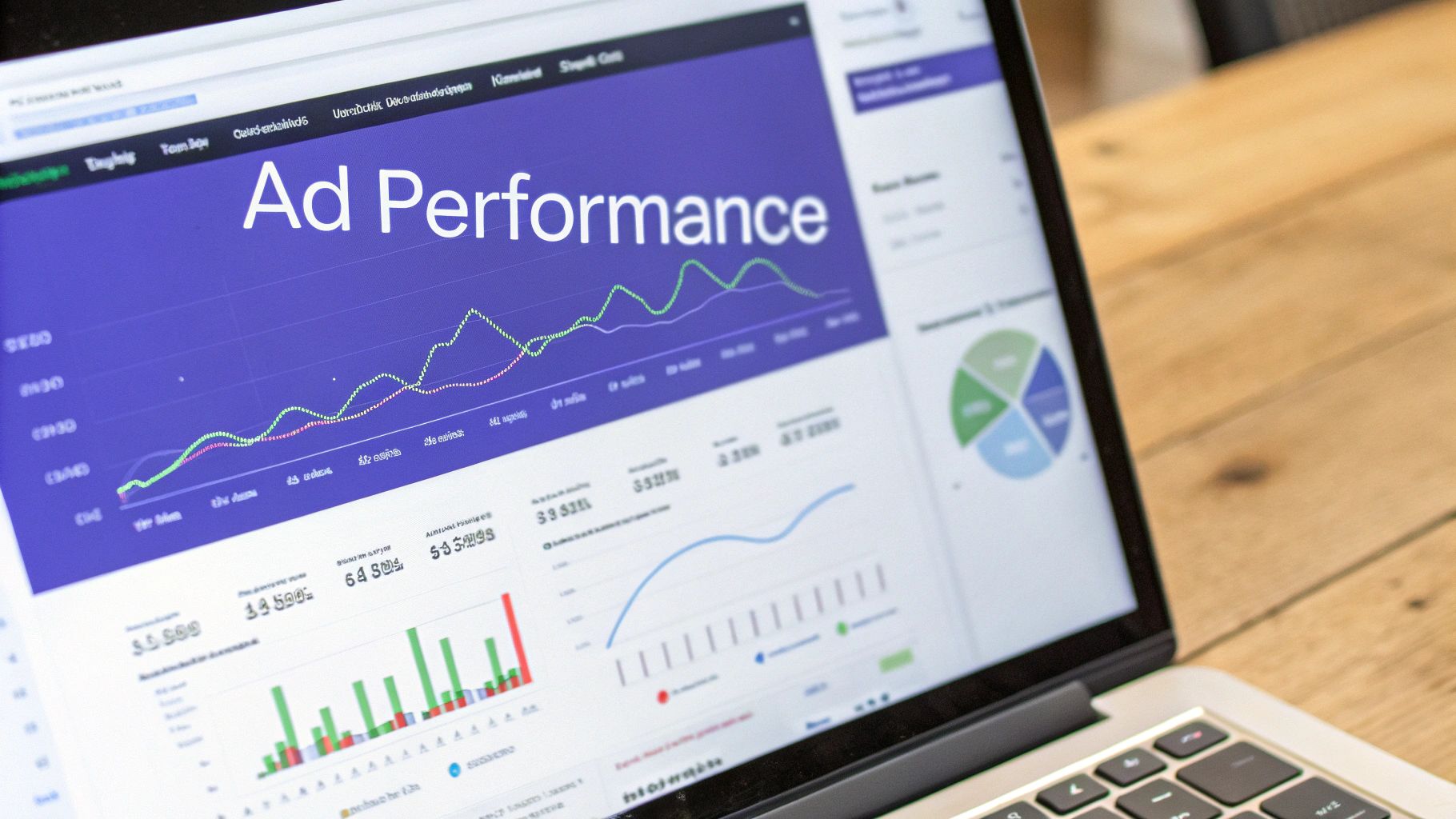
Through strategic testing and continuous optimization, you can transform your AI video ads from interesting experiments into powerful conversion machines. Remember, data is your ally, but only when interpreted and applied correctly.
Scaling Your AI Video Success Into Sustainable Growth
So, you’ve absolutely nailed your first few AI video ads. That's fantastic! Now comes the really exciting part: scaling that initial success into something sustainable. It's tempting to just ride the wave of those early wins, but trust me, building a system is the key to long-term growth. Let’s dive into how to expand your winning campaigns without sacrificing the quality that got you those results in the first place.
Building Repeatable Frameworks and Templates
Think of your early successful videos as the foundation. From these, you can create templates for your scripts, visuals, and even your ad copy. This builds a repeatable framework that maintains quality and dramatically boosts your production speed. This isn't some secret trick - it's standard practice for agencies managing millions in AI video ad spend. They’re not starting from scratch each time; they're building systems. For example, if a specific type of hook consistently performs well, turn it into a template and adapt it for different products or services.
Advanced Audience Expansion and Personalization
As you scale, reaching the right people becomes even more crucial. This is where smart targeting comes in. Instead of just aiming for broad demographics, use AI's power to personalize your message at scale. Imagine creating dozens of slightly different video variations, each tailored to a small niche within your target audience. This lets you connect with specific customer segments and maximize your ROI as your budget grows.
Campaign Management Strategies for Maximum ROI
Managing bigger campaigns requires a shift in how you work. You might start using campaign management tools like Google Ads or Meta Ads Manager to automate things like bid adjustments and ad scheduling. These tools are essential for optimizing performance and keeping an eye on multiple campaigns at once. I've personally seen how these tools free up your team to focus on strategy instead of getting lost in manual adjustments.
Operational Considerations for Large-Scale Campaigns
When I talk to agencies managing substantial ad budgets, a few common themes always come up: team structure, workflow automation, and quality control. Building a dedicated team with specialized roles for scriptwriting, video production, and campaign management can be a complete game changer. Automating repetitive tasks through AI tools or even custom scripts can dramatically boost efficiency. And finally, strong quality control processes ensure consistency and prevent costly mistakes as your output increases.
Don't let your initial successes fade away. By building a robust, scalable system, you can turn AI video advertising from a cool experiment into a major driver of sustainable growth. Ready to tap into the real power of AI for video marketing? Explore how Sprello can simplify your video production and help you scale your success: Discover Sprello


